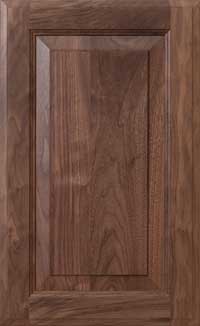Walnut
General Info and Benefits
Walnut - Juglans nigra, Black Walnut
General Description
• The sapwood is creamy white
• The heartwood is light brown to dark chocolate brown, with occasional purplish casts
• Commercially available walnut is usually steamed to darken sapwood
• Generally straight-grained
• Most prized when wavy or curly grain adds to the figure
• A great wood for using in contrast with lighter-colored species
Physical Properties
• A tough hardwood of medium density
• Has moderate bending and crushing strengths and low stiffness
• Janka Rating System = 1010 (higher Janka rating = harder wood)
Where It Grows
• Throughout Eastern U.S.
• Principal commercial region is the Central states
• Average tree height of 100 to 150 feet
Relative Abundance
• 1.9 percent of total U.S. hardwoods commercially available
• Reasonable availability
Did You Know?
• Walnut is one of the few American species planted as well as naturally regenerated
General Description
• The sapwood is creamy white
• The heartwood is light brown to dark chocolate brown, with occasional purplish casts
• Commercially available walnut is usually steamed to darken sapwood
• Generally straight-grained
• Most prized when wavy or curly grain adds to the figure
• A great wood for using in contrast with lighter-colored species
Physical Properties
• A tough hardwood of medium density
• Has moderate bending and crushing strengths and low stiffness
• Janka Rating System = 1010 (higher Janka rating = harder wood)
Where It Grows
• Throughout Eastern U.S.
• Principal commercial region is the Central states
• Average tree height of 100 to 150 feet
Relative Abundance
• 1.9 percent of total U.S. hardwoods commercially available
• Reasonable availability
Did You Know?
• Walnut is one of the few American species planted as well as naturally regenerated
-
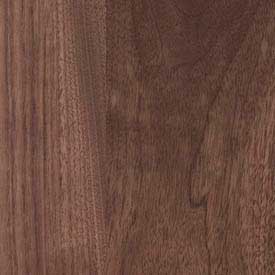 Walnut SelectKnown for its light gray to purple-brown color tone, Walnut Select will not display sapwood on the face, although some may be seen on the back. Its grain pattern can contain both straight and wavy sections as well, and has a reduced allowance for small knots and pin knots.
Walnut SelectKnown for its light gray to purple-brown color tone, Walnut Select will not display sapwood on the face, although some may be seen on the back. Its grain pattern can contain both straight and wavy sections as well, and has a reduced allowance for small knots and pin knots. -
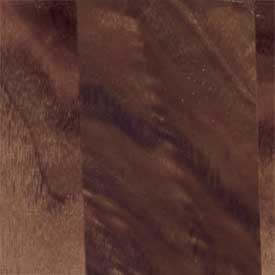 Walnut NaturalWalnut Natural can display a noticeable mix of heartwood and sapwood on the face. Its grain pattern can contain straight, wavy, and additional pattern sections and it has an allowance for small knots, pin knots, mineral, and other natural characteristics.
Walnut NaturalWalnut Natural can display a noticeable mix of heartwood and sapwood on the face. Its grain pattern can contain straight, wavy, and additional pattern sections and it has an allowance for small knots, pin knots, mineral, and other natural characteristics. -
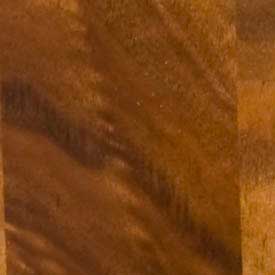 WalnutWhen utilizing Walnut for drawer boxes, this material will show a light gray to purple-brown color tone with allowance for light colored sapwood.
WalnutWhen utilizing Walnut for drawer boxes, this material will show a light gray to purple-brown color tone with allowance for light colored sapwood. -
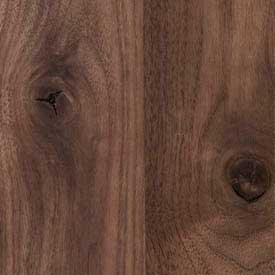 Walnut Rustic KnottyWalnut Rustic Knotty is most known for its allowance for open and closed knots. It can display a noticeable mix of heartwood and sapwood and a variety of grain patterns. It has an allowance for small knots, pin knots, mineral, and other natural characteristics.
Walnut Rustic KnottyWalnut Rustic Knotty is most known for its allowance for open and closed knots. It can display a noticeable mix of heartwood and sapwood and a variety of grain patterns. It has an allowance for small knots, pin knots, mineral, and other natural characteristics. -
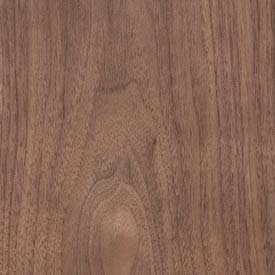 Plain Sliced Select WalnutUsed for veneer doors, Plain Sliced Walnut Select shares many similar characteristics to standard Walnut Select doors, featuring a light gray to purple-brown color tone and a reduced allowance for sapwood on the face. This material also has a reduced allowance for other natural defects like knots.
Plain Sliced Select WalnutUsed for veneer doors, Plain Sliced Walnut Select shares many similar characteristics to standard Walnut Select doors, featuring a light gray to purple-brown color tone and a reduced allowance for sapwood on the face. This material also has a reduced allowance for other natural defects like knots. -
 Walnut Veneer / MDFWalnut Unfinished Veneer on a MDF core will display a fairly consistent color and grain pattern. *May not be stocked at all facilities.
Walnut Veneer / MDFWalnut Unfinished Veneer on a MDF core will display a fairly consistent color and grain pattern. *May not be stocked at all facilities.
